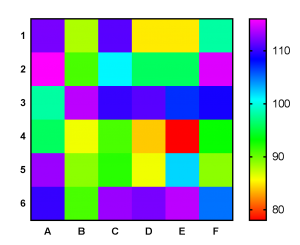

Bar graphs were generated in Graphpad Prism. Pathway analysis was done using the GeneMANIA Cytoscape plugin. The color bar shows the range of fold changes. E) Bar graph shows the–log q-value of enrichments of the top 5 pathways in the list of proteins differentially expressed after the G stimulus.ĭominance of an environmental stimulus used to identify proteins that are important for responding to the environmental stimulus.

D) Fold changes of 379 proteins differentially expressed in response to the G stimulus. C) Bar graph shows the–log q-value of enrichments of the top 5 pathways in the list of proteins differentially expressed after the HT stimulus. B) Fold changes of 283 proteins differentially expressed in response to HT stimulus. The heatmap represents the fold changes of 466 proteins. A) Complete filtered proteomic dataset for high temperature stimulus (HT), glycerol stimulus (G), and concurrent glycerol and high temperature stimuli (HT+G) (Red: Up, Green: Down, Black: No change). The color bar shows the fold change range. The fold changes were log 2 transformed for downstream analysis. Fold changes were calculated from iTRAQ reporter ion intensities using reporter ion intensities from the pooled replicates of growth in glucose as the carbon source at 30☌ as the baseline. Three biological replicates for each growth conditions were performed. cerevisiae (BY4743) cells were grown in rich media under 4 conditions: 1) glucose as the carbon source at 30☌, 2) glycerol as the carbon source at 30☌, 3) glucose at 37☌, and 4) glycerol at 37☌. Proteomic responses to complex environmental stimuli.ĭiploid S.


 0 kommentar(er)
0 kommentar(er)
